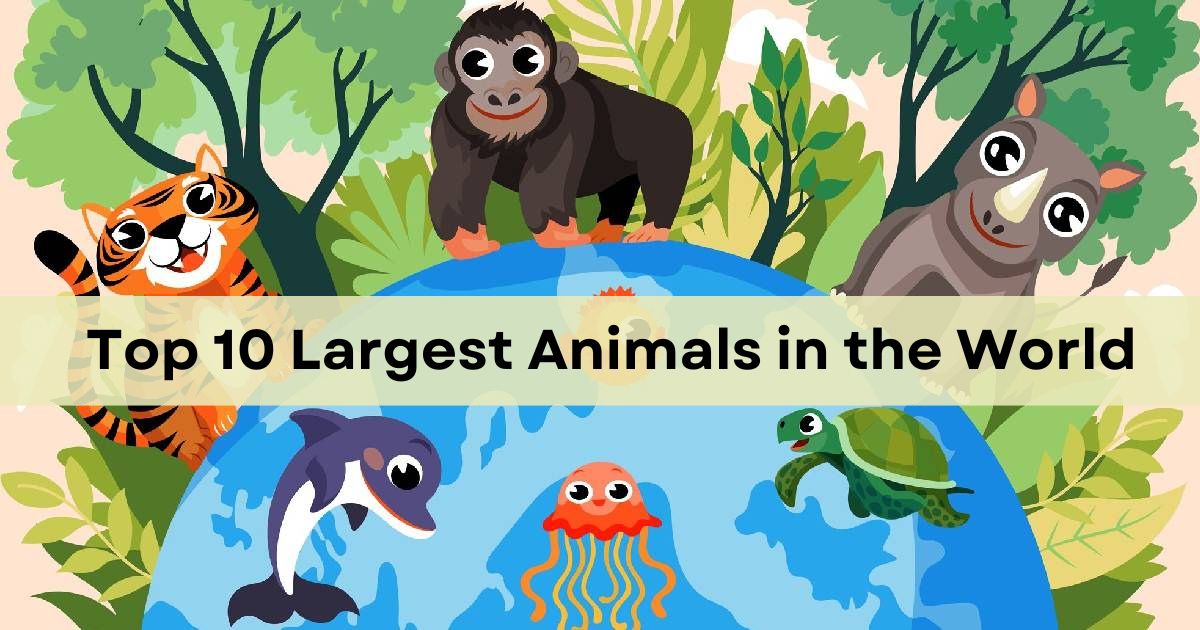Exploring the animal kingdom reveals an astounding variety of creatures, each unique in its own way. Among these, the largest animals in the world stand out, not just because of their size but also due to their impressive adaptations and roles in their ecosystems. Let’s take an educational journey through the ten largest animals in the world, highlighting fascinating facts and vital statistics.
10. Goliath Beetle: The Heaviest Insect
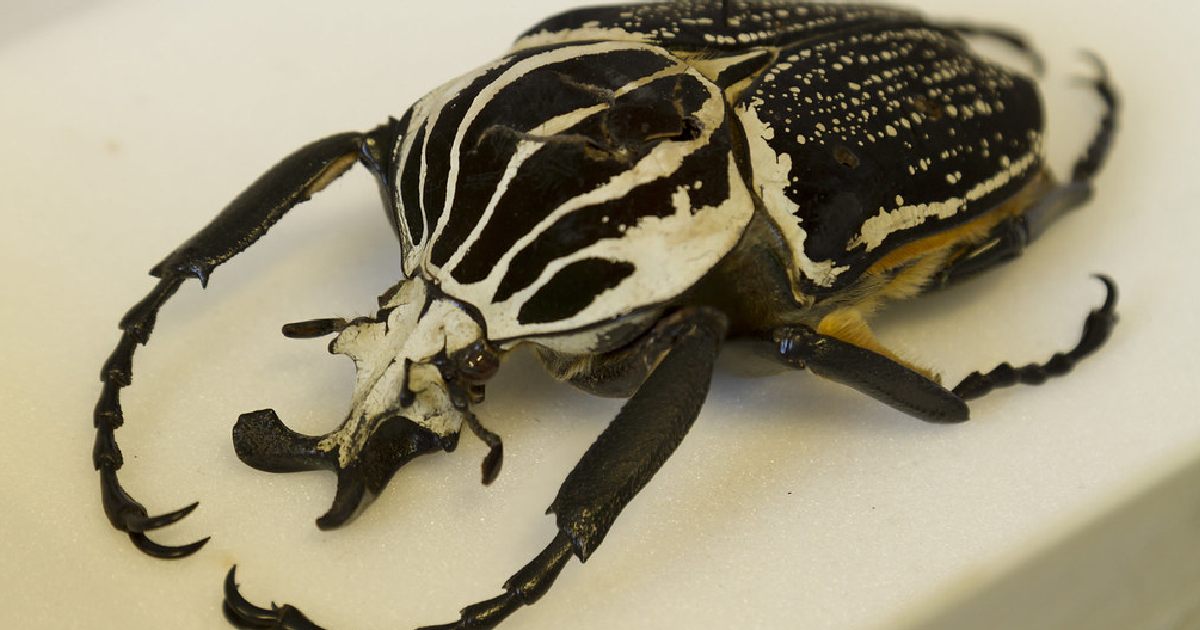
The Goliath beetle (Goliathus goliatus) is the heaviest insect, with some specimens reaching impressive weights.
Key Facts:
- Size: They can weigh up to 3.5 ounces (100 grams) and grow up to 4.3 inches (11 centimeters) long.
- Diet: Larvae feed on decaying wood, while adults consume fruit and sap.
- Habitat: Found in the tropical forests of Africa.
Goliath beetles exhibit remarkable strength, capable of lifting objects over 850 times their body weight.
9. Chinese Giant Salamander: The Largest Amphibian

The Chinese giant salamander (Andrias davidianus) is the largest living amphibian, often considered a living fossil due to its ancient lineage.
Key Facts:
- Size: They can grow up to 6 feet (1.8 meters) in length.
- Diet: Carnivorous, feeding on insects, frogs, and fish.
- Habitat: Inhabits freshwater rivers and lakes in China.
Unfortunately, the Chinese giant salamander is critically endangered due to habitat loss and over-exploitation.
8. Ostrich: The Largest Bird

The ostrich (Struthio camelus) is the largest living bird, known for its speed and distinctive appearance.
Key Facts:
- Size: Ostriches can reach heights of up to 9 feet (2.7 meters) and weigh as much as 320 pounds (145 kilograms).
- Diet: Omnivorous, feeding on plants, seeds, and insects.
- Habitat: Native to the savannas and arid regions of Africa.
Ostriches are flightless but can run at speeds of up to 45 miles per hour (72 kilometers per hour), making them the fastest birds on land.
7. Polar Bear: The Largest Land Carnivore

The polar bear (Ursus maritimus) is the largest land carnivore and a powerful predator in the Arctic region.
Key Facts:
- Size: Male polar bears can weigh up to 1,700 pounds (770 kilograms) and measure over 10 feet (3 meters) in length.
- Diet: Primarily feed on seals, but also consume fish, birds, and vegetation.
- Habitat: Native to the Arctic Circle, including the Arctic Ocean, its surrounding seas, and surrounding landmasses.
Polar bears are excellent swimmers, capable of covering long distances in search of food and suitable ice platforms.
6. Colossal Squid: A Deep-Sea Giant
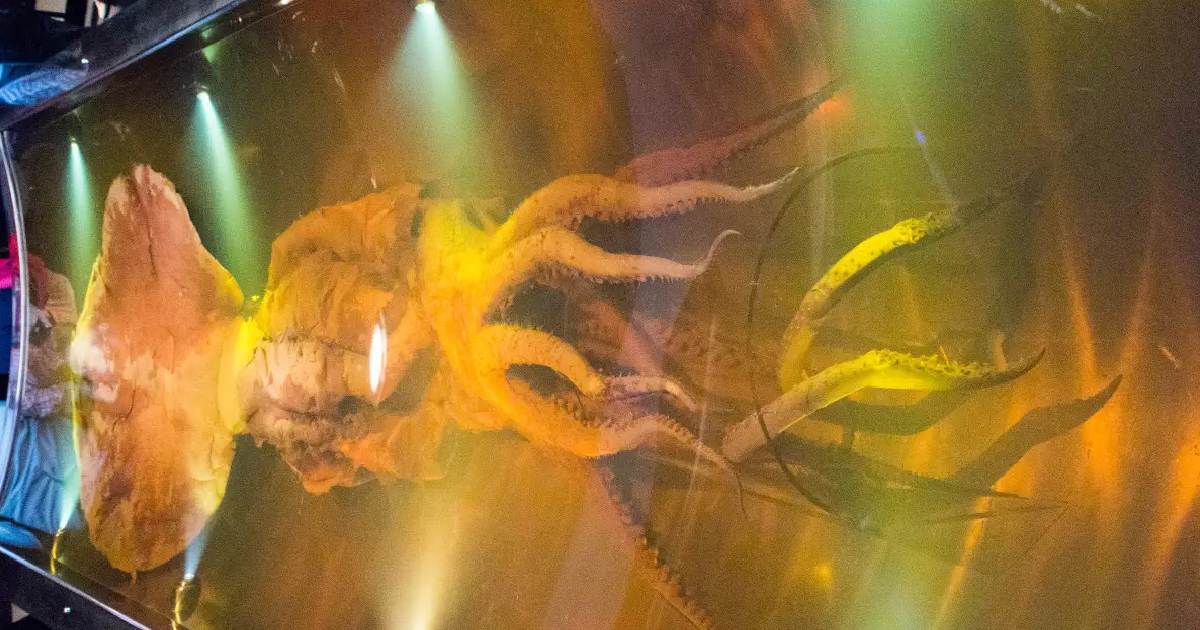
The colossal squid (Mesonychoteuthis hamiltoni) is a mysterious and elusive creature of the deep ocean, holding the title of the largest squid by mass.
Key Facts:
- Size: Estimates suggest they can reach lengths of up to 46 feet (14 meters).
- Diet: Predatory, feeding on large fish and other squid.
- Habitat: Found in the deep, cold waters of the Southern Ocean around Antarctica.
The colossal giant squid has the largest eyes in the animal kingdom, which help it navigate the dark depths of its habitat.
5. Saltwater Crocodile: The Largest Living Reptile
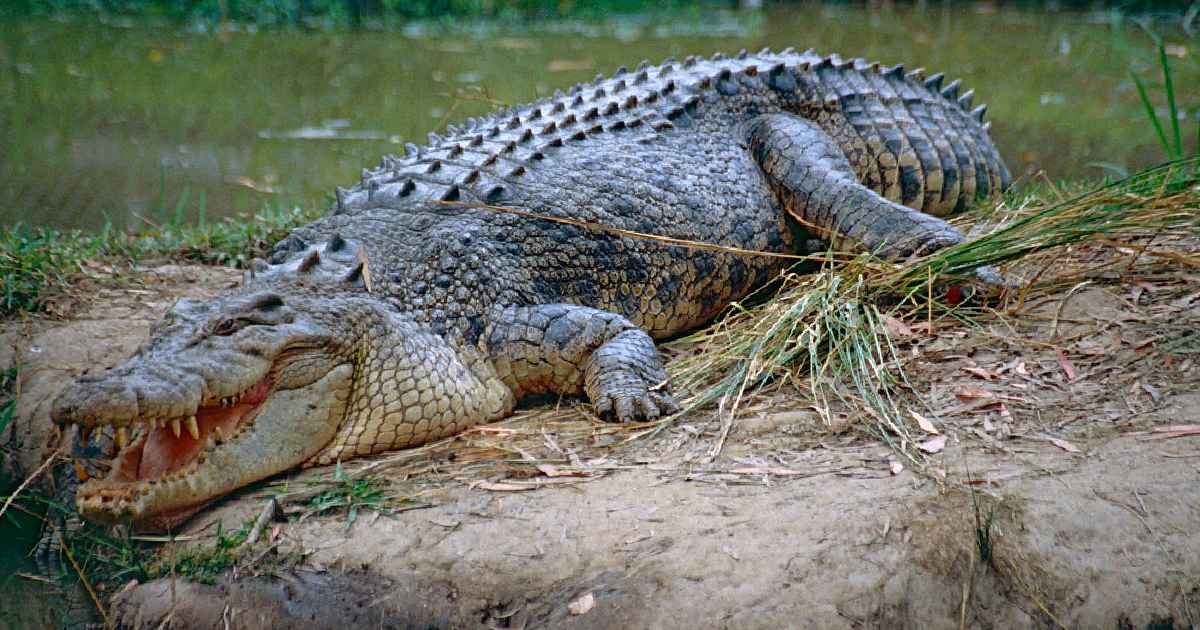
The saltwater crocodile (Crocodylus porosus) is the largest living reptile and a formidable predator in its habitat.
Key Facts:
- Size: Males can reach lengths of up to 23 feet (7 meters) and weigh up to 2,200 pounds (1,000 kilograms).
- Diet: Carnivorous, feeding on fish, birds, and mammals, including water buffalo and occasionally humans.
- Habitat: Found in brackish and freshwater regions of Southeast Asia, Northern Australia, and the Indian subcontinent.
Saltwater crocodiles are known for their incredible strength and territorial behavior. They can live for more than 70 years in the wild.
4. Whale Shark: The Largest Fish
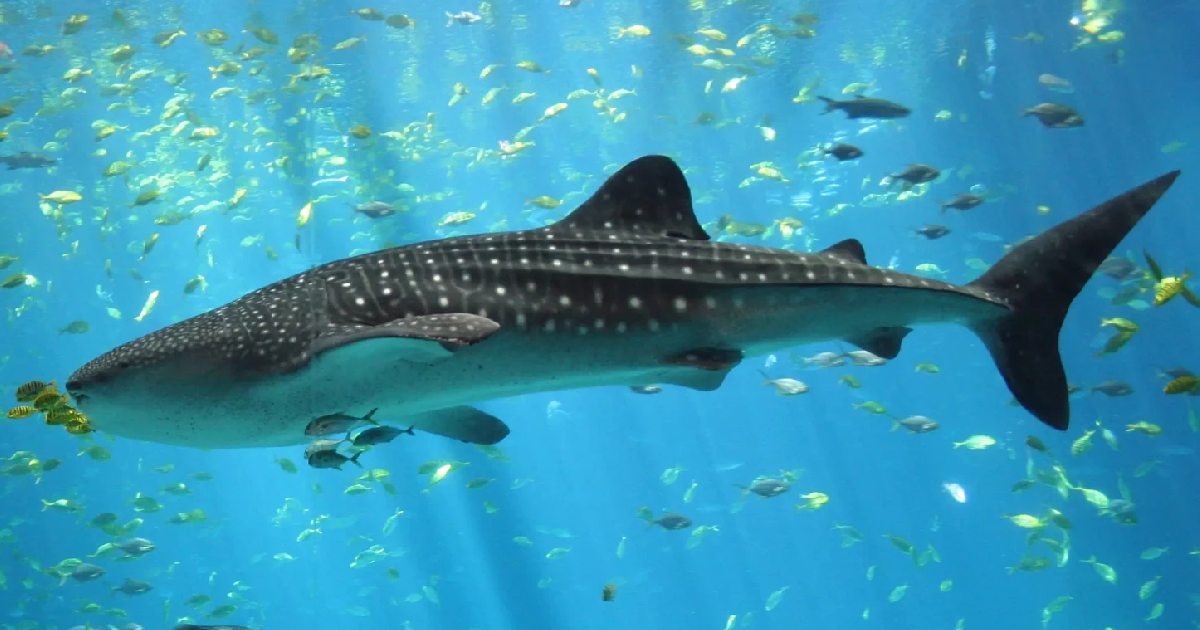
The whale shark (Rhincodon typus) holds the title of the largest fish in the world. Despite their size, whale sharks are known for their gentle nature.
Key Facts:
- Size: Whale sharks can grow up to 40 feet (12 meters) long and weigh around 20 tons.
- Diet: They are filter feeders, consuming plankton, small fish, and krill.
- Habitat: Whale sharks inhabit warm, tropical oceans and are often found in open waters.
These gentle giants are slow-moving and pose no threat to humans. They are often seen by divers and snorkelers, who are awed by their massive size and distinctive spotted patterns.
3. Giraffe: The Tallest Land Animal

Standing head and shoulders above the rest, the giraffe (Giraffa camelopardalis) is the tallest land animal. Their long necks and leg span make them one of the most recognizable animals in the world.
Key Facts:
- Height: Giraffes can reach heights of up to 18 feet (5.5 meters).
- Diet: They primarily feed on leaves, flowers, and fruits from tall trees, especially acacias.
- Habitat: Giraffes are native to the savannas and open woodlands of Africa.
Giraffes have unique adaptations such as a specialized cardiovascular system to pump blood to their brains and long tongues to grasp foliage.
2. African Elephant: The Largest Land Animal

The African elephant(Loxodonta africana) is the largest living land animal. These majestic creatures are known for their intelligence, strong social bonds, and impressive physical attributes.
Key Facts:
- Size: Male African elephants can weigh up to 14,000 pounds (7 tons) and stand up to 13 feet (4 meters) tall at the shoulder.
- Diet: Herbivorous, consuming up to 300 pounds (136 kilograms) of vegetation daily, including grasses, fruits, and bark.
- Habitat: African elephants inhabit various ecosystems, from savannas and deserts to rainforests.
Elephants are known for their incredible memory and ability to use tools. They are not just the largest land mammal but a key species in their habitats, shaping the ecosystems where they roam. They play a crucial role in their ecosystems by maintaining the environment and creating water holes used by other animals.
1. Blue Whale: The Largest Animal on Earth
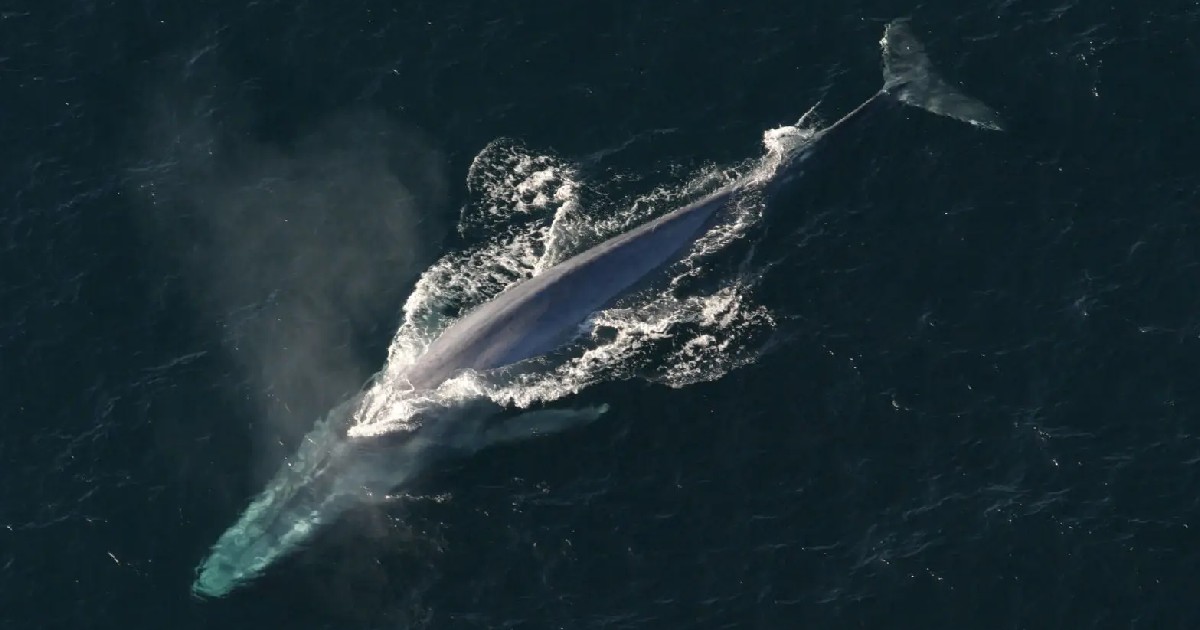
When discussing the largest animals in the world, the blue whale (Balaenoptera musculus) undoubtedly tops the list. These marine giants are the largest animals ever known to have existed, even surpassing the size of the largest dinosaurs.
Key Facts:
- Size: Blue whales can reach lengths of up to 100 feet (30 meters) and weigh as much as 200 tons.
- Diet: Despite their massive size, blue whales feed primarily on tiny shrimp-like animals called krill.
- Habitat: Found in oceans around the world, blue whales migrate between feeding grounds in the polar regions and breeding grounds in the tropics.
Blue whales have an enormous heart, weighing as much as a small car, and their tongues alone can weigh as much as an elephant. The blue whale’s sheer size and power are a testament to the remarkable adaptations that enable these creatures to thrive in the vast expanse of the ocean.
Conclusion
The largest animals in the world are a diverse group, each showcasing unique adaptations that allow them to thrive in their environments. From the depths of the ocean to the vast savannas of Africa, these animals capture our imagination and remind us of the incredible diversity of life on Earth.
In exploring these giants of the animal kingdom from anywhere in the world like South America, we gain a deeper appreciation for their roles in maintaining the balance of their ecosystems. Whether it’s the immense blue whale cruising through the ocean or the towering giraffe nibbling leaves from treetops, the sheer size and presence of these animals inspire awe and wonder.
Understanding and protecting these magnificent creatures is vital for preserving the natural world and ensuring that future generations can marvel at the largest animals in the world.
Frequently Asked Questions (FAQs)
Which animal has the largest species in the world?
The blue whale holds the record for being the largest species in the world. It can weigh up to 180 tons and stretch up to 100 feet in length. Known for their immense size, blue whales are the largest animals ever known to have lived on Earth. These marine giants primarily inhabit the open oceans, where they feed predominantly on krill.
What are the 4 largest land animals?
The four largest land animals include the African elephant, giraffe, polar bear, and saltwater crocodile. The African elephant, the largest land mammal, can weigh up to 14,000 pounds and stand up to 13 feet tall. Giraffes, the tallest land animals, can reach heights of up to 18 feet. Polar bears and saltwater crocodiles are the largest land carnivores and reptiles, respectively, with impressive sizes that highlight their apex predator status in their habitats.
What is the heaviest animal on land?
The heaviest animal on land is the African elephant. As the largest land mammal, it can weigh as much as 14,000 pounds and reaches up to 13 feet in height at the shoulder. These elephants are distinguished by their large ears and powerful build. They play a crucial role in their ecosystems, shaping the landscape and helping maintain its biodiversity.
What is the largest creature ever to live?
The blue whale is the largest creature ever to live on Earth. This marine mammal can reach lengths of up to 100 feet and weigh as much as 180 tons. Blue whales are not only impressive in size but also in their swimming capabilities and deep dives. They primarily feed on krill and are found in various oceans around the world.
What is the fattest animal to exist?
The blue whale is also considered the fattest animal to exist, given its sheer mass and volume. Weighing up to 180 tons, their bodies are supported by massive amounts of blubber, which insulates and provides energy reserves. This adaptation is crucial for their survival in the cold, deep waters they inhabit. Blue whales store energy during feeding times to sustain themselves during leaner periods.

